Freedom Run Winery 2010 Estate Cabernet Franc
I think my Niagara-based colleagues here at the NYCR would agree that their home region has yet to hone in on a ‘signature variety.’ Many grapes have been consistent performers, including chardonnay, pinot noir and cabernet franc.
Does Niagara need a signature variety? I have mixed feelings on the matter, but will explore them in an upcoming post. For now, we can say that it can be helpful to be known primarily for one grape — think Oregon (pinot noir) or the Finger Lakes (riesling) closer to home. On the other hand, merlot as Long Island’s signature variety has been less successful overall to this point. Is that a function of merlot being anything but a hip grape, or about Long Island merlot in general? Agian, we’ll explore that more very soon.
Today, I’d like to offer this about Niagara — it just might be a cabernet franc region, with Freedom Run Winery one of the top makers.
Freedom Run Winery 2010 Estate Cabernet Franc ($24) is a cab franc lover’s cab franc — complex and intricate with an enchanting savoriness.
Explosively aromatic, the nose delivers plump blackberry and cherry fruit aromas that intermingle with notes of tobacco, pencil lead, grilled herbs and bay leaf.
Ripe but not over-extracted or over-oaked (a problem suffered by some of New York’s warm-year cabernet francs), this medium-light bodied (12% abv) cabernet franc is is savory upon opening, showing bay leaf, tobacco leaf, herbs, smoke and spice with black cherry and blackberry fruit flavors holding it all together. Juicy acidity and medium-light tannins, provide structure and life.
On day one of my tasting (I always taste reds over the course of at least three days), I liked this wine. It probably would have scored 3 corks. Maybe 3 1/2.
But when I went back to it on days two and three — I couldn’t believe how the palate had relaxed and unfurled, filling my mouth with and intense core of black fruit with all those savory edges softening and framing the fruit. This is a wine I want more of, and if widely held belief that how a wine stands up to a few days open on the country indicates how well it can age in your cellar, I’d be smart to tuck a few away.
Producer: Freedom Run Winery
AVA: Niagara Escarpment
ABV: 12%
Price: $24*
(4 out of 5, Outstanding and Delicious, Highly Recommended)


















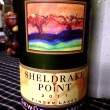
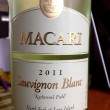
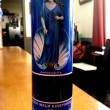

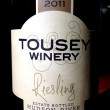
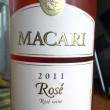
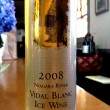

Wow…that’s a good review.
In your opinion, Lenn, how does this wine compare to the top cab francs produced in the Finger Lakes? (And Long Island…I’m just more familiar with the FLX). I know there have been discussions about what the “signature red” of the Finger Lakes might be, and cab franc has been mentioned as a possibility. This review makes me curious about 1) how the best cab francs from each region would “stack up” against one another, and more interestingly, 2) whether the different regions’ cab francs have distinct styles.
Ryan,
A great question! Briefly (because this could be a far longer comment or even a post of its own)
Long Island cabernet franc tends (I’m talking only in generalities here across the board) to be more of the Bordeaux expression. More wood, more tannin. Bigger wines. Sometimes trying to be cab sauv, perhaps because cab sauv isn’t all that consistent here. There are some shooting more for the Loire style, but probably Bourguiel.
Finger Lakes cab franc is often lighter, with a dusty earthiness that not everyone I know likes (including several winemakers up there). Sometimes it’s a bit hollow for me — there’s a reason that so many winemakers I respect are blending it with Blaufrankisch in the Finger Lakes.
In Niagara, there are only a handful of producers shooting for ‘fine wine’ at this point, but the cab francs (and cab franc-dominated blends) are some of my favorites. Some are fruitier than others, but blind I would have guessed this was a Chinon for around the same price.
Remember, I’m talking in generalities here. I don’t think any of the three regions (or HV for that matter) have settled on a regional style for cab franc. I’m most familiar with Long Island (of course) but there are almost as many styles as their are wineries down here. Everything from steel-fermentation without any oak to neutral oak ferm and aging to lots of new oak.
I still, on the whole, find them more interesting than the merlots.
Lenn,
Thanks for the thorough response. I know what you mean about the hollowness and dustiness that turn up in FLX cab francs. It’s not a wine I tend to buy year after year. But in years like 2007 and 2010, some really great stuff gets made. From this past summer, I remember being impressed with the 2010 Keuka Lake Vineyards and Ravines.
I really need to drink some LI wine…all the reviews you’ve posted over the last few years have made me very curious, but I have yet to actually make the time to get a bottle. But that’s what happens when you live 20 minutes from Keuka.
Lenn
Totally agree with your observation of how this wine evolves after a day or two.
Getting back to signature varieties of Niagara - I moved here to drink and make cab franc…but damn those pinot noir grapes just keep seducing.
I believe we will see more and more solid examples of both varieties but pinot may have the edge in becoming a signature grape just because it seems like there’s 8x as much planted and more winemakers will get a chance to play around with it.
This year everything in Niagara is a signature variety. Outside of Pinot, everything is heading north of 24 brix and I think we are looking at 25 brix or more before the acidity is at a point where I will harvest.I think signature *varieties* are more likely; to choose one would be kind of silly and simple minded, don’t you think? Even to choose a single varietal for an area as large as the finger lakes seems like an impossible task.
Grapes that grow extremely well here on the Niagara Escarpment every year are: Pinot Gris, Riesling, Chardonnay, Pinot Noir, Merlot, Syrah, and, of course, Cabernet Franc. There are lots of experimental plantings of other varietals that show promise like Pinot Blanc and Gruner towards the lake where it is a bit cooler. Niagara County has historically had one of the broadest ranges of growing climates for fruit - possibly the broadest in the state. It might be appropriate to choose a varietal in an area where only one will grow well, but here there is so much that can be grown well here (and in many areas of the state).
Dunan: Thanks for the comment — I always like discussing and debating these sorts of things with you.
Putting aside the need — or not — for a signature variety for a second (we’ll get to that in a moment) I think we need to fine tune our definition a bit.
I don’t think something that grows well necessarily qualifies if the resulting wines aren’t delicious and more importantly distinctive. A signature variety also needs to be noticed and celebrated enough by consumers to build the region’s reputation.
Maybe the grape that grows best in a region is Seyval blanc — but if the wines aren’t very good and/or no one wants them, it’s not really a signature variety, right?
Moving onto whether or not a region needs a signature variety — of course not. No region needs one, but it does tend to happen over time. If I name most regions in the world, you will pick out one (maybe two — one red, one white) grape (or blend) that you think of immediately.
Burgundy= chardonnay and pinot noir
Mosel= riesling
Napa: cabernet sauvignon (and maybe chardonnay)
Oregon: pinot noir (and maybe pinot gris)
The only region I can think of that is really pushing and celebrating its diversity is Paso Robles.
Overall, I’m not convinced that a region needs a signature variety, or that those in the region should chose one (should probably happen more naturally).
That all said, focusing on riesling sure has done some good things for the Finger Lakes in our home state, hasn’t it?
Well, Riesling is consistent year after year in the FL and it makes a really great wine there. It would still be signature if it wasn’t popular tough, as popularity comes and goes. No one cared about NZ Sauv Blanc until it became a popular varietal, but it is still their signature.
For the Niagara Escarpment, I’d say the things that we know are distinctly different and very high quality here are Syrah, Cab Franc, Pinot Noir, and Chardonnay. Out by the lake, the aromatic whites like Gewurtz, Pinot Blanc and Gruner really shine. That’s a pretty diverse selection and a marketing challenge for sure. All subject to change as people plant other things and we learn more.
And you can call me “Captain Redundant” for the double post/comment. I will claim tired winemaker’s syndrome.
Just reread this - Are you SURE this wine lasted 3 days? That is absolutely amazing! When Robin and I open a bottle of NY wine here, it tends to disappear in a day, 2 max. If I had a bottle of ANYTHING last three days, I would suspect Robin of topping it off with some cheap French plonk.